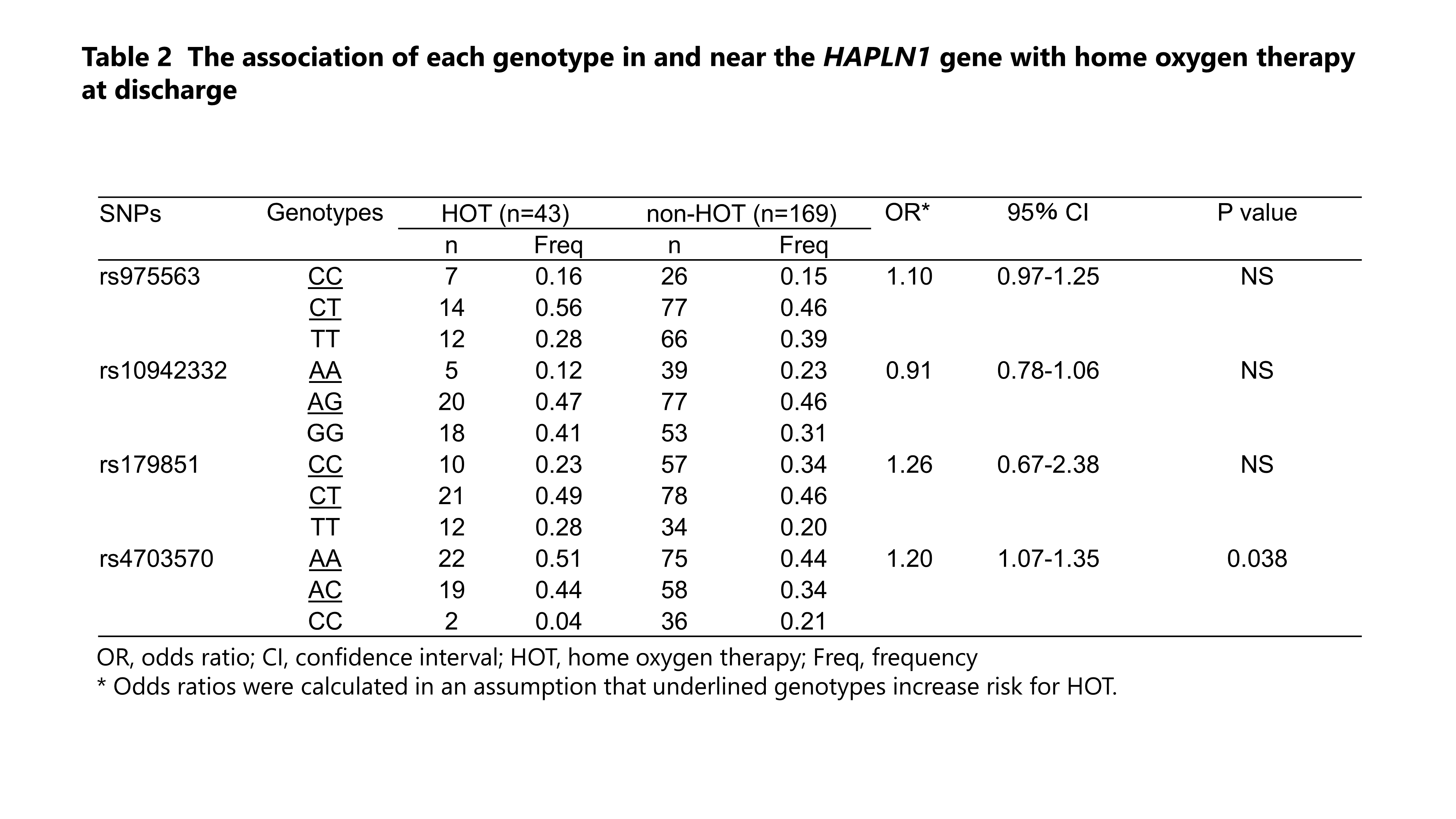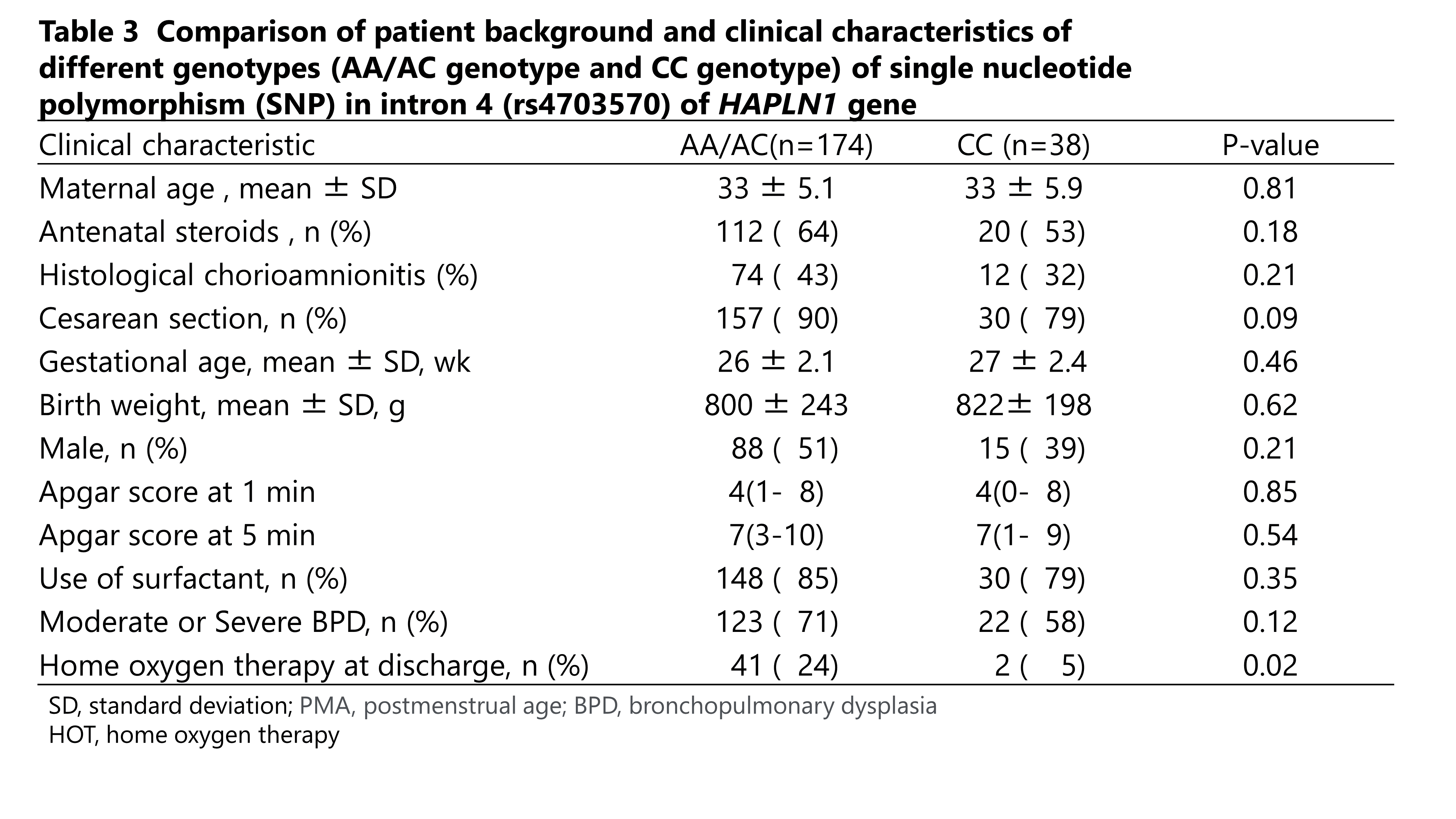Neonatology
Session: Neonatology Pulmonology Clinical Science 1: Bronchopulmonary Dysplasia
572 - Association of polymorphism of hyaluronan and proteoglycan link protein 1 with the risk of bronchopulmonary dysplasia in preterm neonates
Saturday, May 4, 2024
3:30 PM - 6:00 PM ET
Poster Number: 572
Publication Number: 572.1407
Publication Number: 572.1407

Masato Ito, MD, PhD (he/him/his)
Assistant professor
Akita University
Akita shi, Akita, Japan
Presenting Author(s)
Background: Bronchopulmonary dysplasia (BPD) has a lasting effect on the respiratory function of infants, imposing chronic health burdens on infants and their families. BPD is influenced by various prenatal, postnatal, and genetic factors.
Objective: This study explored the correlation between BPD and a specific single-nucleotide polymorphism (SNP) in the hyaluronan and proteoglycan link protein 1 (HAPLN1) gene among premature Japanese infants.
Design/Methods: Prenatal and postnatal data from 212 premature infants were collected and analyzed by four HAPLN1 SNPs using the TaqMan polymerase chain reaction method. The clinical characteristics and genotype frequencies of HAPLN1 was were assessed and compared between the home oxygen therapy (HOT) and non-HOT groups.
Results: Individuals with AA/AC genotypes in the rs4703570 SNP exhibited significantly higher HOT rates at discharge than those with CC homozygotes (odds ratio, 1.20, 95% confidence interval, 1.07–1.35, p = 0.038). A logistic regression analysis determined that CC homozygotes in the rs4703570 SNP did not show a statistically significant independent association with HOT at discharge.
Conclusion(s): HAPLN1, which participates in maintaining chondrocyte cartilage and pericellular matrix homeostasis, may have implications for BPD development. Notably, the presence of CC homozygotes in the rs4703570 SNP appears to be associated with a lower risk of HOT.
.png)


